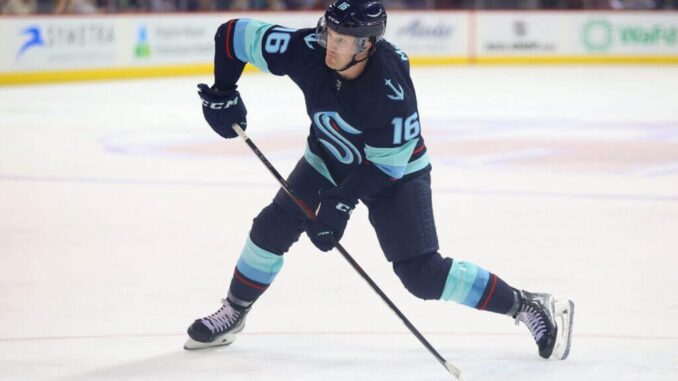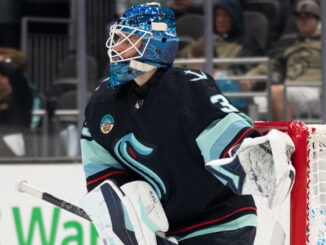
Heading into the Seattle Kraken’s inaugural season, much of the discussion revolved around how a defensively conscious club could score without many established offensive weapons. Enter Jared McCann, a forward who finished fifth in scoring (32 points in 43 games) on the Pittsburgh Penguins last season. Despite his significant production, skeptics point to his individual shooting percentage (15.1%) as a reason for concern. However, McCann has rocketed past his 2020-21 pace, reassuring his doubters that last season was more than a mirage. Let’s dig into the underlying reasons leading to his early success.
Increased Ice-Time
The correlation is impossible to ignore – more ice-time leads to more scoring opportunities, which leads to increased production. At just under 17 minutes a night with the Kraken, McCann is given almost two minutes more per game than at any point in his career. Unsurprisingly, the points are flowing with ease, as McCann has posted six points in six games to start the season.
Most of his increased playing time has stemmed from the power play where McCann is the second-most used skater and highest forward thus far at 19 minutes of ice-time. As a result, he accounts for two of Seattle’s three power play markers, and his two points on the man-advantage are tied for first on the team.
Although he’s only the fifth-most used forward at even-strength, he leads the team with four points and, more importantly, three primary assists. He’s taken his chance and run with it, his speed and vision on full display as he exceeds the heightened expectations brought on by a more prominent offensive role. I’d bet that it continues.
More Talented Line-Mates
In Pittsburgh, McCann was most often flanked by Jason Zucker (178 minutes) and an aging Jeff Carter (166) at five-on-five; decent skaters, but not otherworldly support players. With Seattle, Jordan Eberle and Jaden Schwartz have combined with McCann to make up the Kraken’s top forward line. Eberle and Schwartz are perennial 20-goal threats, which sets McCann up with teammates who can use his strengths.
Although McCann has performed admirably in attack, his line has exhibited worrisome defensive deficiencies, posting shot- and expected goals shares hovering around the low 40% mark. As the trio lacks experience operating as a team’s primary scoring options, they’ve been caved in possession-wise. The return of Yanni Gourde offers the Kraken hope that they can employ the former Tampa Bay Lightning jitterbug in a shut-down role, freeing up McCann to capitalize on weaker competition.
A Hot Shooting Streak
It would be irresponsible of me to breeze over McCann’s astronomical shooting percentage through six games. The 2014 first-round pick has scored three goals on ten shots, a 30% conversion rate that surely regresses as the season progresses. If McCann shoots closer to his career average of 9.9% for the rest of the year while staying on pace for 1.66 shots per game, he’ll finish the season with 14 goals.
If he increases his shot attempt rate, 14 should be the bare minimum. McCann averaged 2.16 shots a game in 2020-21, outpacing his current clip, making for a much more favorable target to ensure consistent offensive output. His first 20-goal campaign looks to be a lock, with more than 60 points a genuine possibility if he maintains anything close to this level of play.
Can McCann Set A New Career High?
Although it’s unlikely that McCann maintains his point-per-game pace through 82 games, he is on track to obliterate his previous career-high of 35 points. If we include his first few NHL seasons to set a realistic floor, he should hit at least 40 points at season’s end. However, counting the highest ice-time deployment of his career and his explosive start to the year, that would be an immense disappointment.




